Home>Garden Essentials>Best Garden Tillers To Weed, Plow, and Crumble Soil

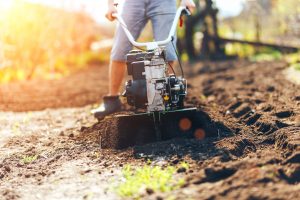
Garden Essentials
Best Garden Tillers To Weed, Plow, and Crumble Soil
Modified: December 6, 2023
Prepare your backyard soil to grow fresh vegetables and exquisite flowers with a handy yet powerful garden tiller! Discover the best options here.
(Many of the links in this article redirect to a specific reviewed product. Your purchase of these products through affiliate links helps to generate commission for Storables.com, at no extra cost. Learn more)
Gardening is a healthy hobby that many people enjoy. For one, being close to nature while dirtying your hands with the soft and warm solid truly feel relaxing. Building your garden, however, is no easy feat. Plants don’t grow overnight, and they require extra TLC to bloom or grow healthily. And the first and foremost important step is to prepare your soil properly by using a garden tiller.
What is a Garden Tiller and When to Use It?
Not preparing the soil is one of the most common mistakes of first-time gardeners. As long as the soil is available in their backyard, they probably think they could plant a seed right away. The problem with backyard soil in many urban and suburban areas is that it has no topsoil or has low organic matter. This is caused by various construction activities that alter the soil and remove essential soil nutrients, causing soil compaction. This is where a garden tiller comes in. It is a garden tool with tines (or blades) used to dig deeper and break hard and compacted soil. Using this can help loosen the soil for better aeration, improve water flow, and promote root growth in plants.
Keep in mind, however, that garden tillers should not be used regularly as they can cause the soil to clump. Over-tilling can also lead to soil losing nutrients and beneficial organisms such as earthworms. So, how often should you use your garden tiller? When is the best time? Ideally, during spring when the soil is warm and dry. But before you start tilling your garden, test the soil first. You’ll know if it’s dry already if you pick up a handful of dirt, turn it into a ball, and it crumbles after poking it. If it doesn’t, it means it’s still wet and not yet ready for tilling.
Cultivators vs Tillers: What Are Their Differences?
Anyone who has zero knowledge in gardening would think cultivators and tillers are the same. We can’t blame them as both gardening tools are used to dig and turn over the soil. However, each has a specific purpose. Knowing the difference between the two gardening tools will help you determine what you should use for a certain task or situation.
Gardeners use cultivators in existing small garden beds to mix soil additives (compost, manure, and peat moss) and remove weeds. Meanwhile, tillers are used for digging and breaking hard soil to create a new garden bed. You can’t use tillers and cultivators, and vice versa. Tillers usually have large engines, so they are hard to maneuver in small gardens. Although manual hand tillers exist, they have a more heavy-duty design, so they will only overmix your garden soil and ruin it. On the other hand, cultivators are not powerful enough to break down hard, compacted soil.
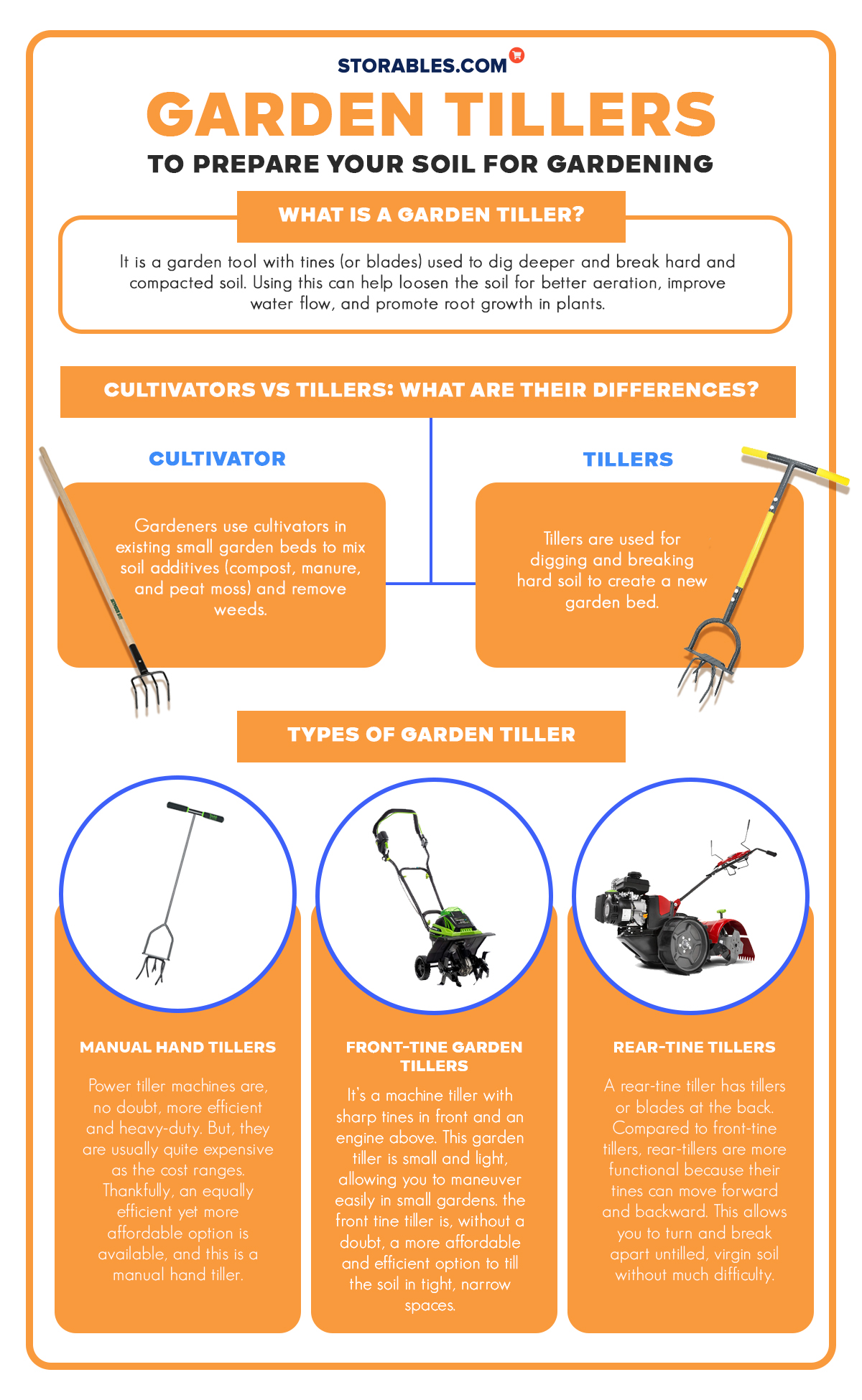
Best Garden Tillers
It’s the middle of spring – the perfect time to build a new garden. Consider purchasing a tiller to crush large chunks of dirt and loosen the soil. For starters, check out these garden tillers you can buy from Amazon. We classified them by type to help you choose the right one for your garden.
Manual Hand Tillers
Power tiller machines are, no doubt, more efficient and heavy-duty. But, they are usually quite expensive as the cost ranges from $100 to $1,000. It would be impractical to invest in such expensive gardening equipment if you are building only a small raised bed garden in your backyard. Thankfully, an equally efficient yet more affordable option is available, and this is a manual hand tiller. Find out more about the best manual hand tillers by reading below.
If you choose gardening as a hobby because you want to get some exercise, then the Yard Butler Garden Tiller is for you. This hand tiller requires you to use the force of your body to push down the ground and break the soil. Compared to a shovel, this hand-held garden tiller is easier to use because it has a wide T-handle, durable foot bar, and sharp claw tines. You can use the foot bar to step and dig deeper into the soil while clutching on the T-handle. Don’t worry that it will blend easily because it is made from heavy-duty perforated steel.
Key Features
- Foot bar
- Wide, T-handle
- Sharp claw tines
Specifications
- The T-handle is 12 inches long
- Measures 37 inches (L) x 7 inches (W)
- Item weight: 4.6 pounds
Pros
- Rust-resistant handheld tiller
- T-handle has cushioned grips to provide extra comfort
- The hand tiller is long enough to help reduce back pain
Cons
- Not ideal for gardens with rocky soil and heavy roots
Gardening is, no doubt, fun and fulfilling. You get to enjoy the fresh air while growing fruits and vegetables you can eventually use for your favorite recipes. But gardening is also an exhausting physical activity that requires you to constantly bend your back and stoop your body forward, causing body aches.
Luckily, you can reduce body pain while gardening with the BARAYSTUS Garden Tiller. This portable tool allows you to adjust its height, so you can work comfortably in your garden. It also features sharp, angled tines to help you dig deeper into the soil without much effort. Unlike most hand-tillers with a T-handle design, the BARAYSTUS Garden Tiller has an S-shape handle to offer a more ergonomic grip.
Key Features
- S-shape handle
- Height-adjustable
- Arrow-sharp tines
Specifications
- Overall dimensions: 20.8 inches x 7.28 inches x 40.9 inches
- Item weight: 4.99 pounds
- 3-step height adjustment: 40.9 inches, 37.4 inches, and 33.8 inches
Pros
- Pole is made from steel for extra strength
- Powder-coated garden tiller to prevent rust
- Soft grips for a more comfortable tilling experience
Cons
- Quite difficult to assemble
Using shovels to break the soil won’t be effective as most don’t have a gripping step to push them further down the soil. Instead of a shovel, consider using the Jardineer Manual Tiller. This hand tiller features an anti-slip footplate to allow you to tread on the soil easily. Moreover, it has an ergonomically curved handle that helps reduce the effort of twisting the hand tiller when loosening the soil. Just like the Yard Butler Garden Tiller, the Jardineer Manual Tiller has a long handle. No more bending your body forward when tilling!
Key Features
- Curved handle
- Arrow-sharp tines
- Anti-slip footplate
Specifications
- Overall dimensions: 37 inches x 16.5 inches x 4.3 inches
- Item weight: 4.73 pounds
Pros
- Has a curved handle to make tilling easier
- Pole is long enough to help reduce back pain while tilling
- Made from durable powder-coated steel
- Ideal for both narrow and wide gardens
Cons
- No soft grips
Front-Tine Garden Tillers
If you like to grow a small vegetable garden in your backyard, try using a front-tine garden tiller. It’s a machine tiller with sharp tines in front and an engine above. This garden tiller is small and light, allowing you to maneuver easily in small gardens. The only downside is that they require more control as the front tines automatically pull the device forward. Despite having a slight advantage, the front tine tiller is, without a doubt, a more affordable and efficient option to till the soil in tight, narrow spaces. Here are some of the best options:
Earlier we mentioned how tilling helps promote soil aeration. It’s the exchange of gasses between soil and atmosphere to supply oxygen to plant roots. If compacted soil is not tilled, it would be difficult for soil aeration to take place as the soil is too dense. As a result, the tunnels and burrows where the gasses pass through become blocked. It’s not enough to use a rake to open up the soil. You will have to use a tiller machine to dig deeper into it.
For tiller machines, we recommend using the Sun Joe Cordless Tiller. This gardening equipment has four steel tillers that can cut through the soil up to 14 inches wide and 7 inches deep. It also has a 3-position height adjustment feature that allows one to till the soil at an ideal depth height. To give you an idea, garden soil should have a depth height of 8 to 12 inches to speed up seed germination.
Key Features
- Powerful motor
- 3-position height adjustment
- Durable steel tilling blades
Specifications
- 4 tilling blades
- 500-watt brushless motor
- Overall dimensions: 55 inches (L) x 14 inches (W) x 43 inches (H)
Pros
- Has long-lasting lithium-ion batteries
- Comes with a dual-port charger that fully charges the tiller within an hour
- Easy-glide wheels to conveniently maneuver through the garden
Cons
- Not ideal for breaking new ground soil
If your backyard garden was untended for a year, lots of weeds could now be growing in the soil. Weeds can go out of control because they only need a short time to finish germinating and flowering. Not to mention, they have root systems that can grow and adapt to various soil conditions. It is vital to remove weeds as they can easily take over your garden, and steal nutrients and resources from other plants, therefore, weakening them.
We recommend using the Generac Front-Tine Garden Tiller to remove numerous weeds at once. It’s a gas-powered tiller with a powerful OHV Generac engine. Moreover, it has sharp, modular tines that can cut through weeds fast and till the soil in three different widths.
Key Features
- Efficient engine
- Variable tilling width
- Height-adjustable handlebar
Specifications
- 8 inches wheels
- Tilling widths: 21 inches / 16 inches / 11 inches
- Overall dimensions: 28 inches (L) x 19 inches (W) x 26 inches (H)
Pros
- Ideal for tilling large gardens due to its adjustable tilling width
- The handlebar can be adjusted for a more convenient tilling experience
- Equipped with an OHV Generac engine that has a dual element filter to protect it from dust and dirt
Cons
- Loud tiller machine
- Narrow wheels make it difficult to maneuver on rough ground
Ever tried moving a plant to your backyard, only for it to die after a few days? If you never missed a day of watering it, you probably wondered what went wrong. There are lots of possible reasons, one of which is soil compaction. If the soil is compacted, water can’t seep through the soil and reach the plant roots. You should break the soil first with a garden tiller to improve soil drainage.
Use the Earthwise Electric Garden Tiller for breaking hard compacted soil. It has sharp steel tines that can plow compacted ground up to 8 inches deep. What’s more, it’s lightweight, so you can conveniently use it in small, narrow gardens. No need to also worry about dragging an annoyingly long extension cord across your backyard as it is cordless.
Key Features
- Lightweight and cordless
- Noise-less, small garden tiller
- Powerful engine
Specifications
- Made from alloy steel and plastic
- 4Ah battery & charger included
- Overall dimensions: 44 inches x 15 inches x 37 inches
Pros
- Comes with a fast charger
- Ideal for both small and large gardens
- Environmentally-friendly tiller machine because it doesn’t emit fumes
- A quiet tilling machine that won’t disturb your neighbors while you work in the garden
Cons
- The battery doesn’t last long even after fully charged
Read more: What Gardeners Need
Rear-Tine Tillers
As the name suggests, a rear-tine tiller has tillers or blades at the back. Compared to front-tine tillers, rear-tillers are more functional because their tines can move forward and backward. This allows you to turn and break apart untilled, virgin soil without much difficulty. Another advantage of rear-tine tillers is they can cover a large backyard area quickly because most have a wide and long design. Check out the functional gardening tools below.
When starting a garden, tilling the soil is not enough. You also have to prepare a seedbed to promote seed germination and increase a plant’s survival rate. And the first step in seedbed preparation is to clear out existing plants and weeds.
You can use the EARTHQUAKE Rear-Tine Garden Tiller to create a seedbed and remove the weeds. This gas-powered tiller has two modes; CRT (Counter Rotating Tines) for loosening the soil and SRT (Standard Rotating Tines) for smoothening the soil to prepare the seedbed.
Key Features
- Wide, airless wheels
- Dual-grip handlebars
- Two modes: CRT and SRT
Specifications
- 99cc 4-Cycle Viper Engine
- Tilling width is 16 inches
- Overall dimensions: 63 inches x 21 inches x 49 inches
Pros
- Includes a 5-year warranty
- Has a compact frame to maneuver better in tight, narrow spaces
- Activate the instant reverse mode with just a quick pull of the handle
Cons
- It takes up a lot of storage space
Thick thatch or pieces of small dead grass can appear on your lawn if you leave it untended for a year. This can affect grass growth as they block water and nutrient passages in the soil. Since it’s almost impossible to remove thick thatch by hand, you need to use a heavy-duty garden tiller.
With the Champion Power Rear-Tine Tiller, you can quickly break down thick thatch. It features hardened steel tines with a dual-rotation tilling function that allows you to switch from forwarding mode to reverse mode instantly. You will also love how it has self-propelled tires that can run smoothly on uneven terrains.
Key Features
- Gas-powered
- Dual-rotation tilling
- Self-propelled tires
Specifications
- 19-inch tilling width and 8-inch tilling depth
- Item weight: 106.9 pounds
- Overall dimensions: 58.7 inches (L) x 20.9 inches (W) x 22 inches (H)
Pros
- Includes a 2-year warranty
- Shuts down immediately once it detects a low-oil engine
- Hardened steel tines can cut through even the toughest soil
Cons
- Difficult to load on a trailer truck due to weight
Read more: Gifts For Gardeners Who Have Everything
How to Use a Garden Tiller: Important Tips
Once you’ve got yourself a garden tiller, don’t start tilling your garden or lawn right away. Certain preparations must be done first to get the best results. Preparing also helps avoid instances of getting injured while tilling.
With that, here are some tips on how to use a garden tiller:
Prepare the Soil First
First, look for any obstacles in your garden and lawn. This includes large rocks, stones, branches, and even tree roots that can potentially damage your garden tiller. Ask also the local utility department in your area if underground power lines are running under your backyard garden. You wouldn’t want to disrupt any connections and cause grave problems. Lastly, remove large, thick weeds, especially if you are using a less heavy-duty front-tine tiller or hand tiller.
Avoid Digging Too Deep
When breaking hard, virgin soil, don’t force the garden tiller to dig too much on the first pass. You will have to do it in two passes to prevent digging too deep and maintain the right till depth. Digging deeper will not only destroy the soil structure, but it will be difficult for the seeds to germinate. It will also take more time for the water and nutrients to reach the seeds.
Wear Safety Gear
Although a garden tiller machine is a convenient piece of gardening equipment, it can also be dangerous because of the sharp blades or tines. Take necessary precautions by wearing eye protection goggles, gloves, or any safety gear. Also, don’t forget to read the instructions carefully! Doing this will help you learn how to control and operate the machine properly.
Final Thoughts
If you’ve checked numerous gardening blogs, you probably know by now that tilling is not recommended by many. It promotes soil erosion and kills the microorganisms in the soil that could help plant growth. This is especially true if you till your garden every day. Still, tilling is worth getting as it helps when the soil is too hard and compact. It is also useful to get rid of multiple weeds at once. If you are not sure what type of garden tiller you should buy, just go back and browse through our list of some of the best garden tillers from Amazon!
Also, you may want to check out these inspiring garden ideas of all time. This guide will help you decide what type of garden you should create in your backyard before you start tilling!
Was this page helpful?
At Storables.com, we guarantee accurate and reliable information. Our content, validated by Expert Board Contributors, is crafted following stringent Editorial Policies. We're committed to providing you with well-researched, expert-backed insights for all your informational needs.

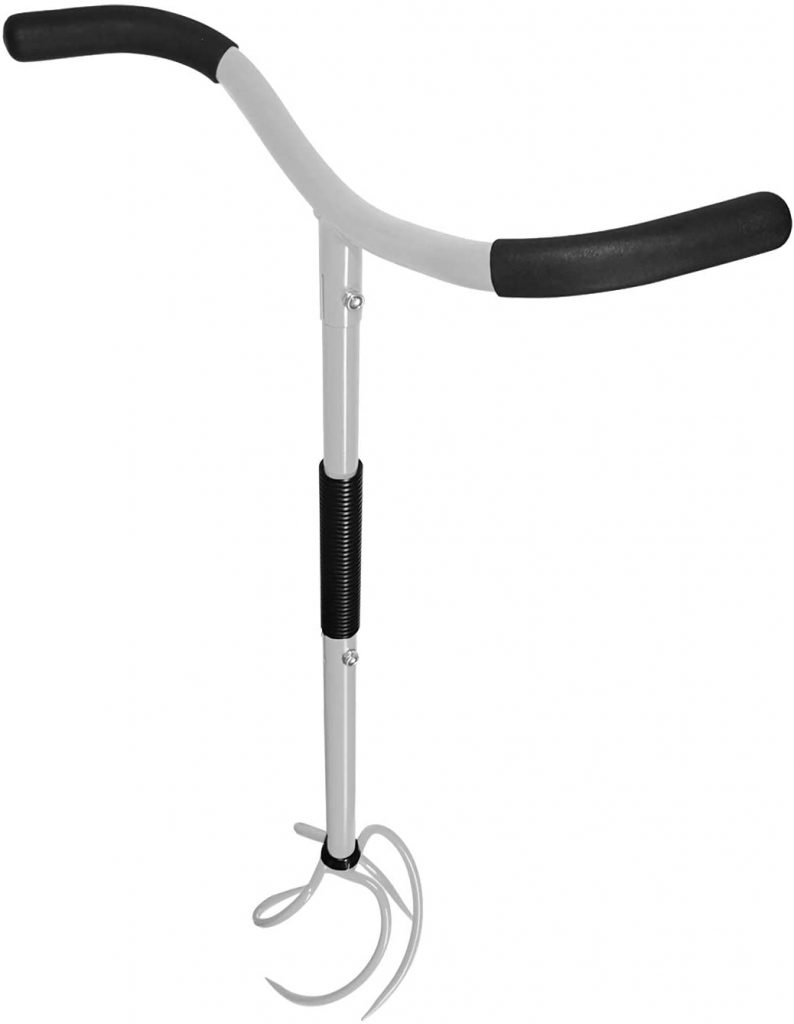

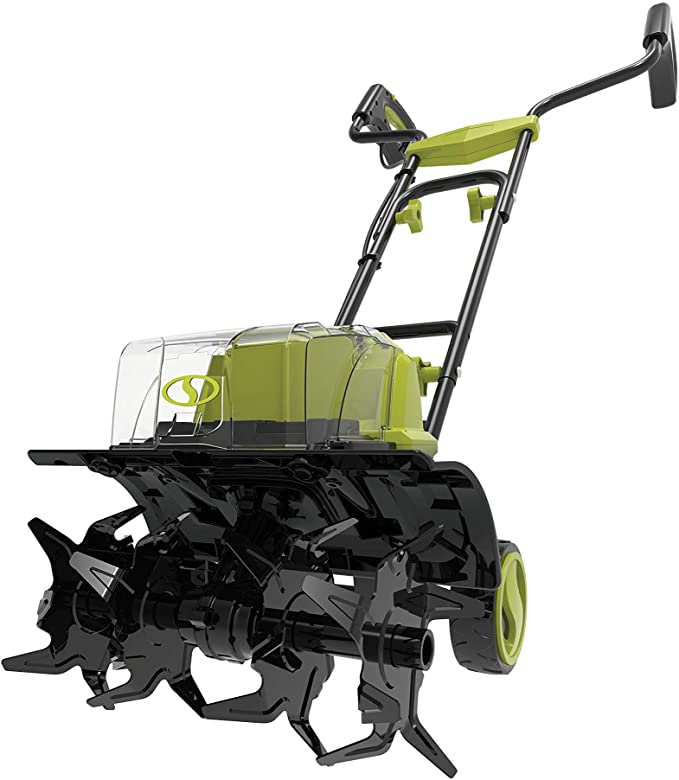
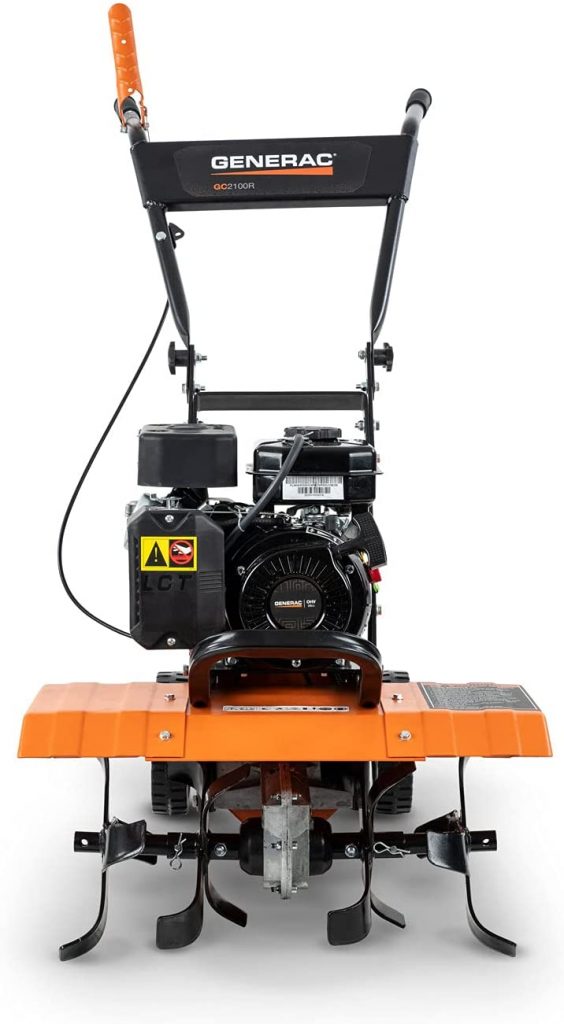
![[Earthwise] Electric Garden Tiller](https://storables.com/wp-content/uploads/2022/04/6.-Earthwise-Electric-Garden-Tiller-714x1024.jpg)
![[EARTHQUAKE] Rear-Tine Garden Tiller](https://storables.com/wp-content/uploads/2022/04/7.-EARTHQUAKE-Rear-Tine-Garden-Tiller-1024x885.jpg)
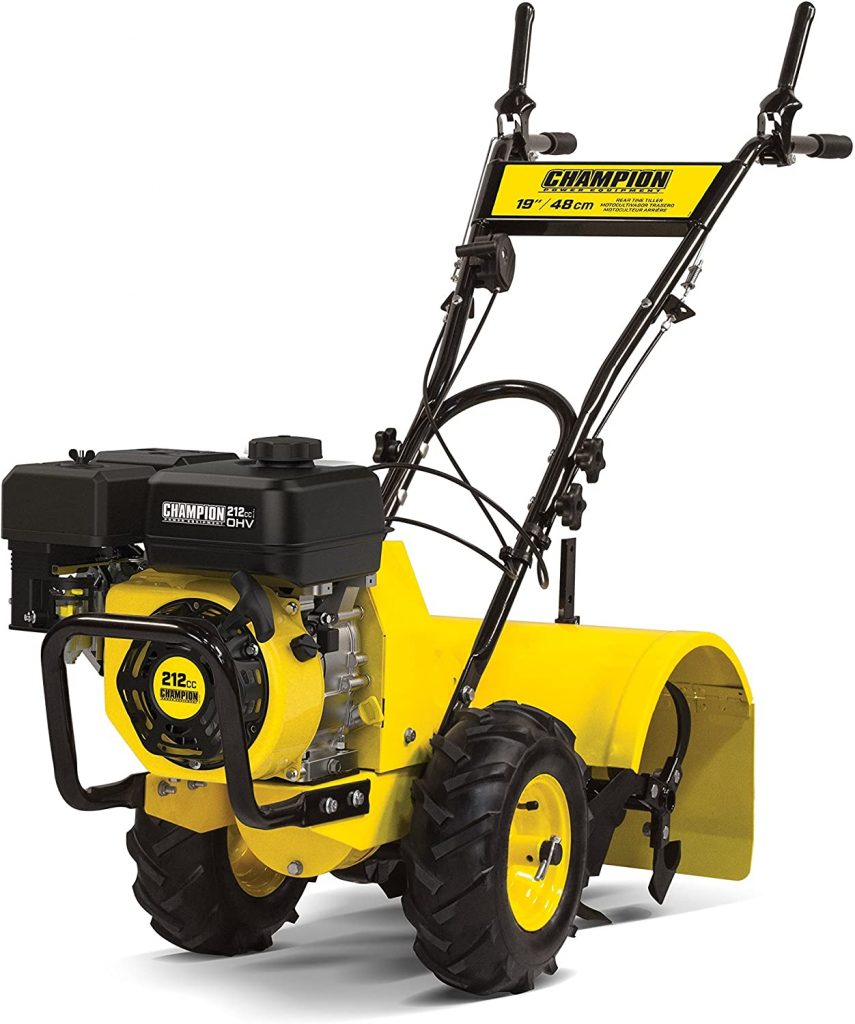
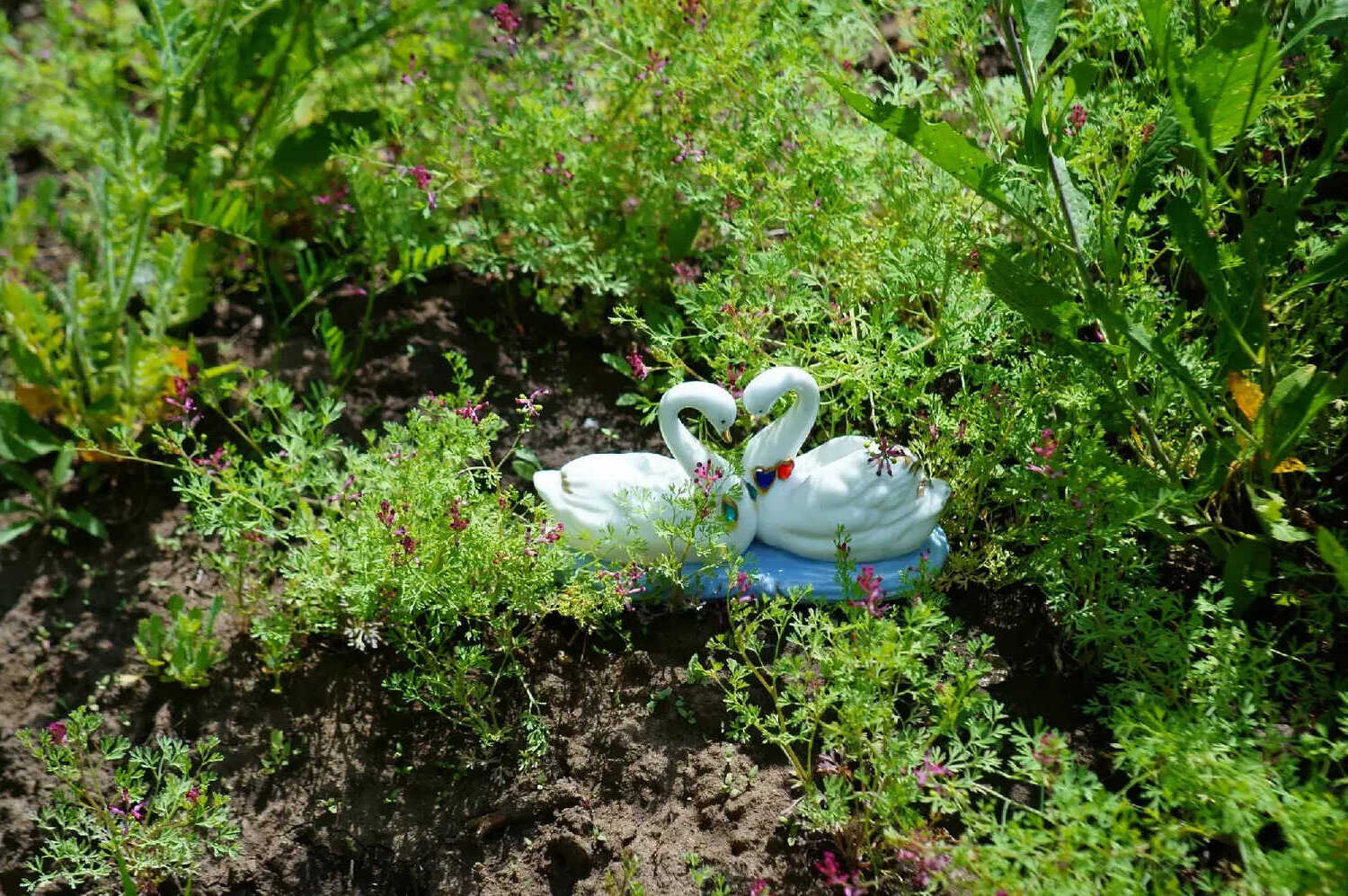
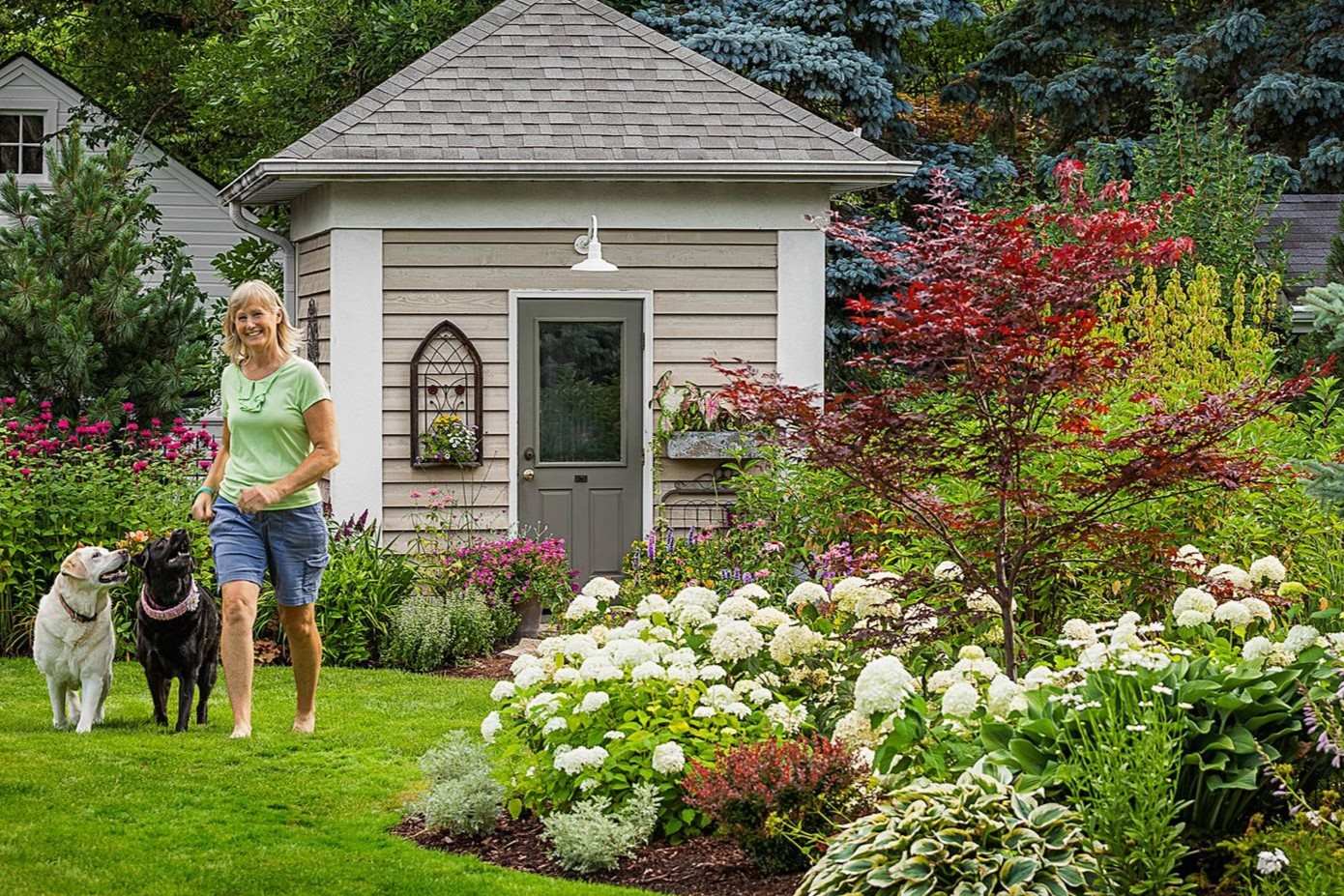
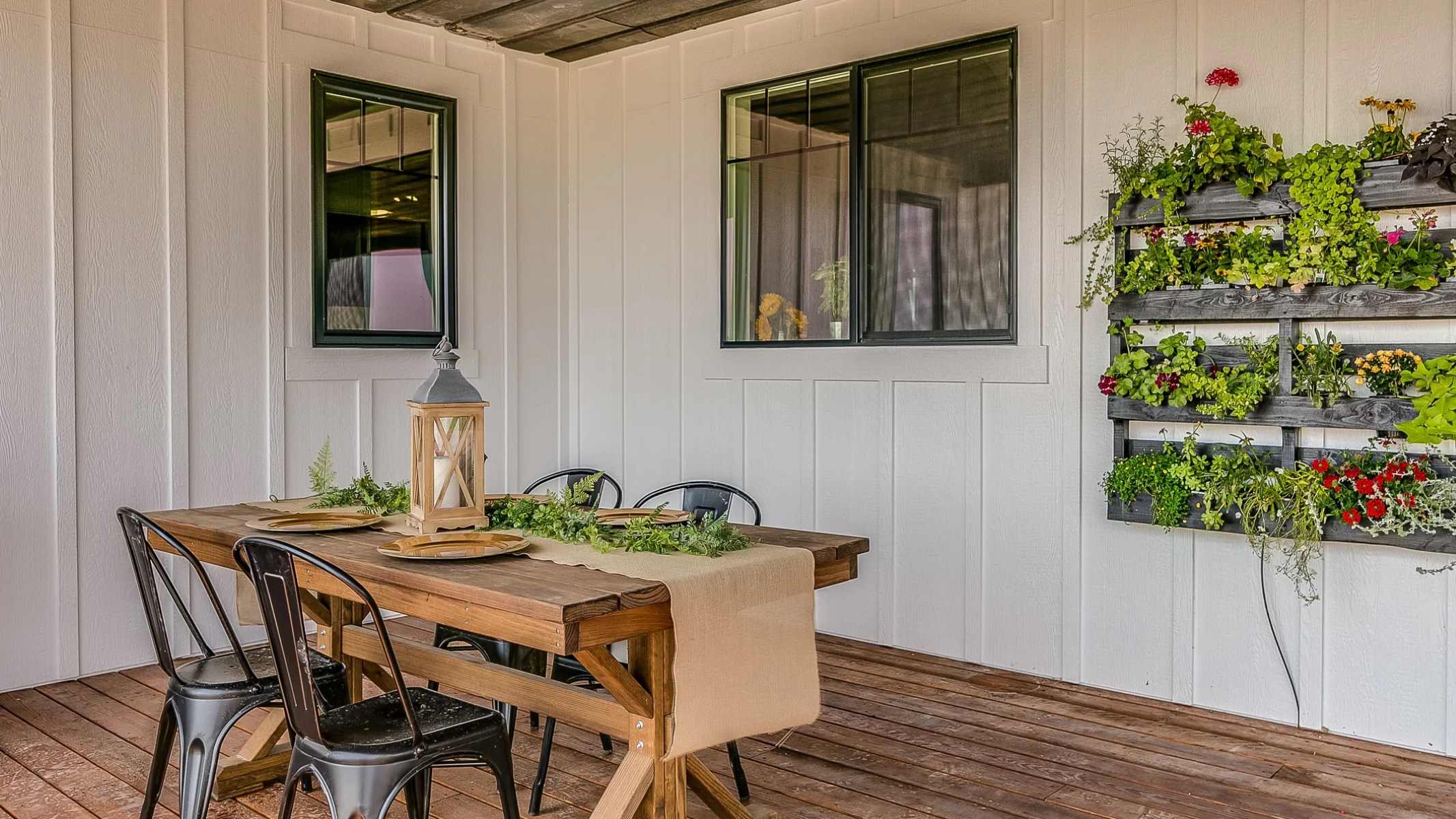
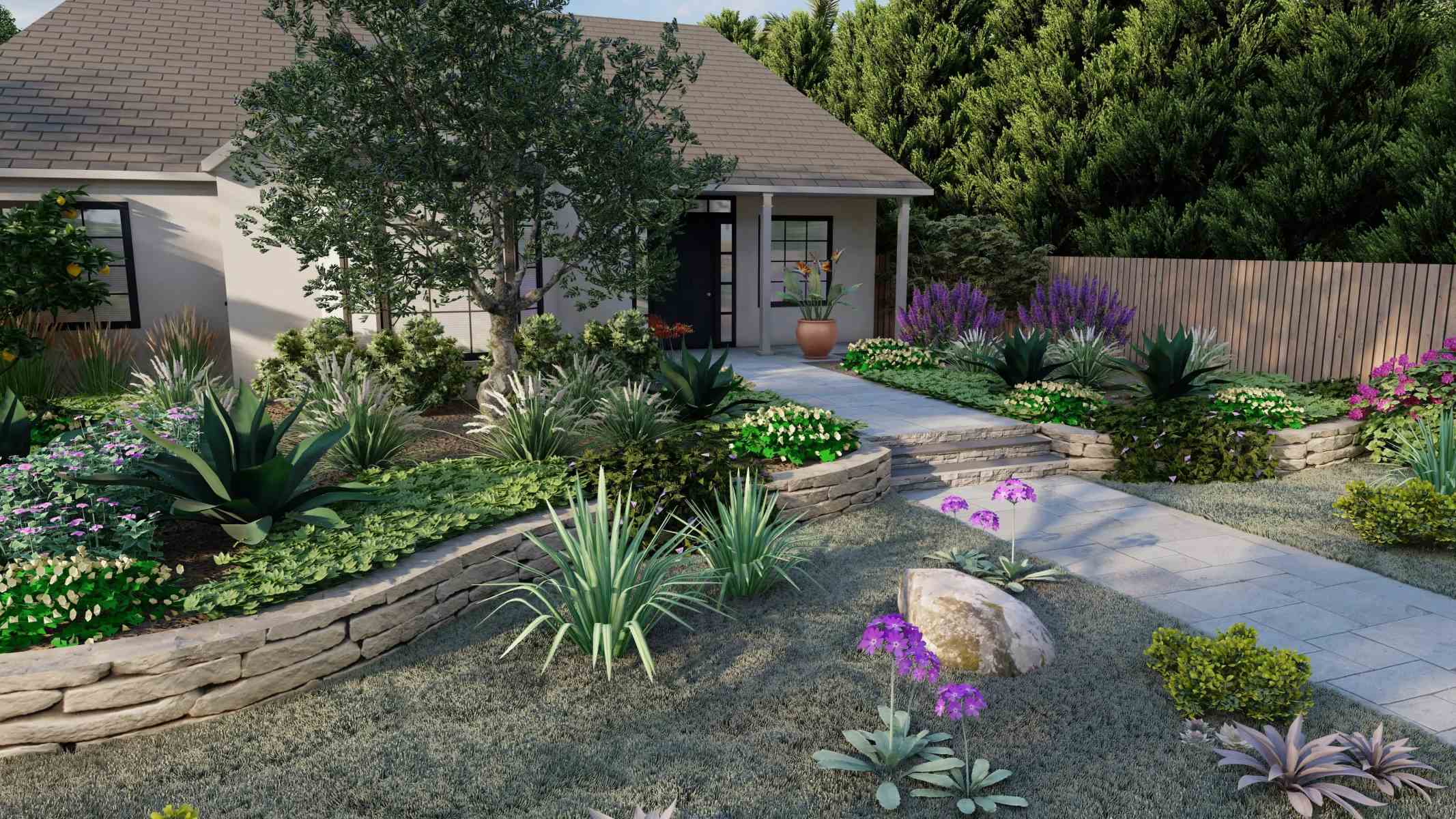
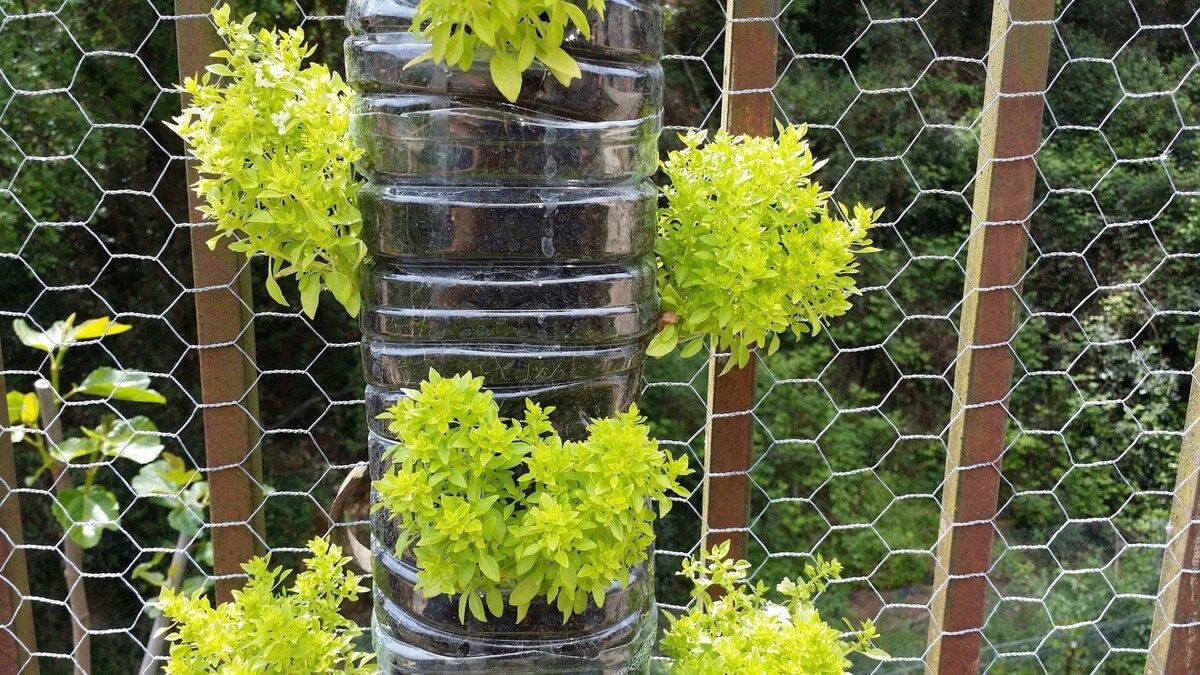
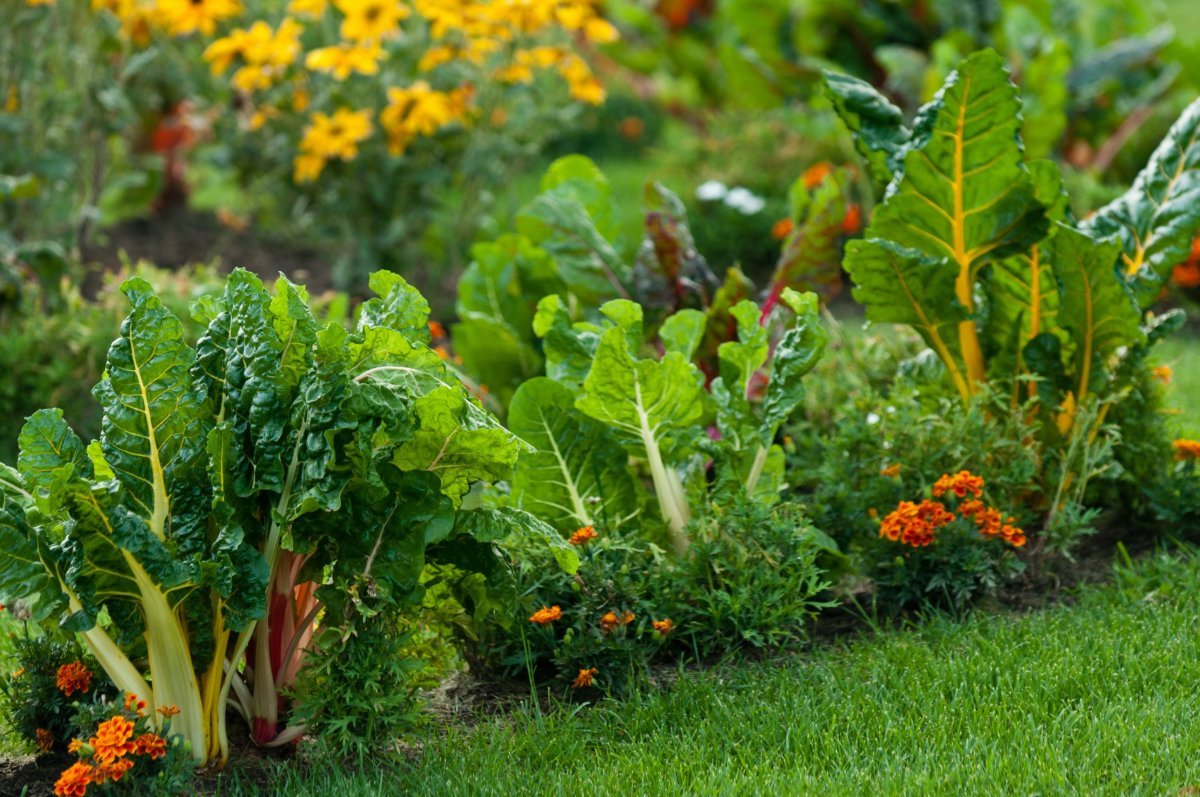
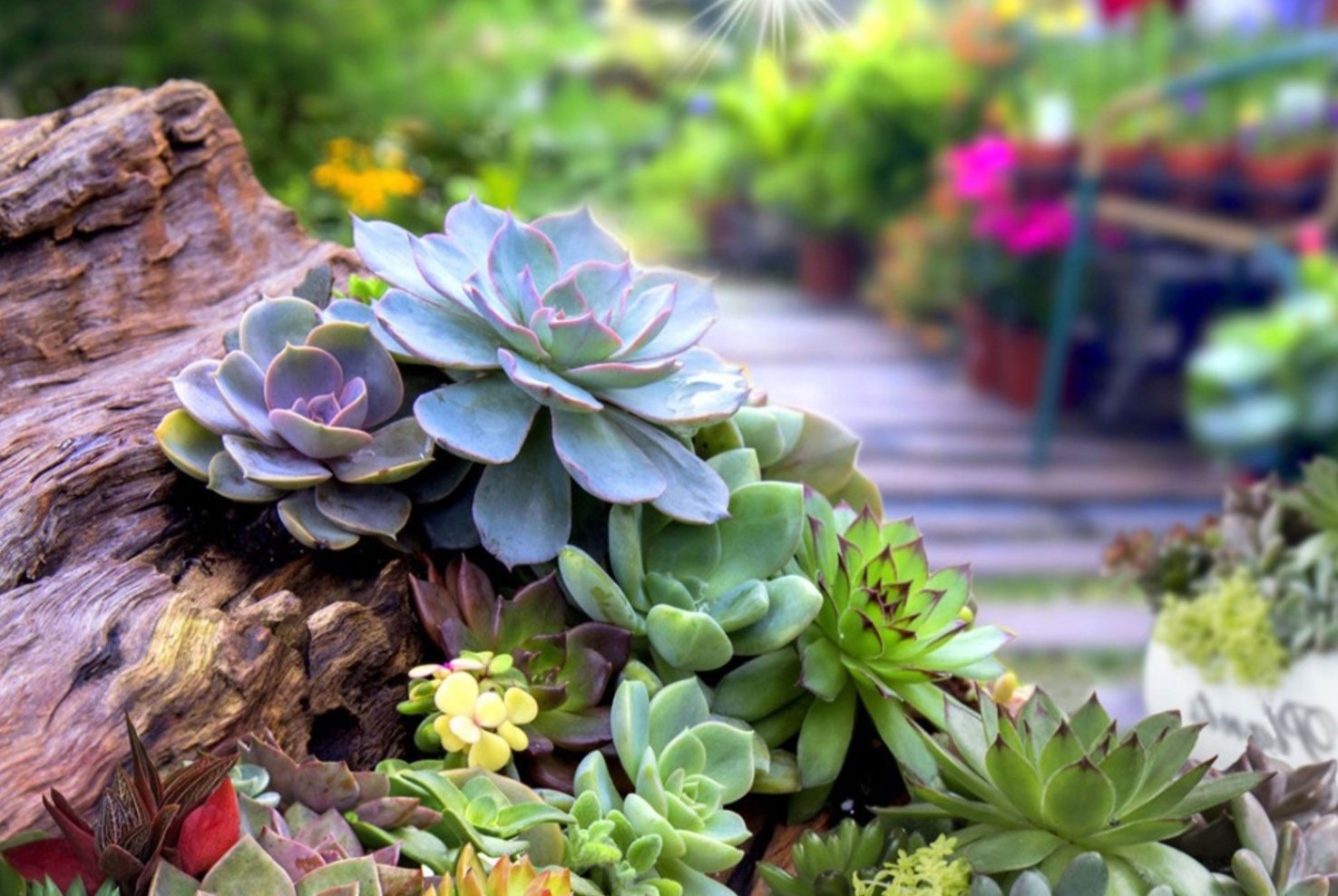
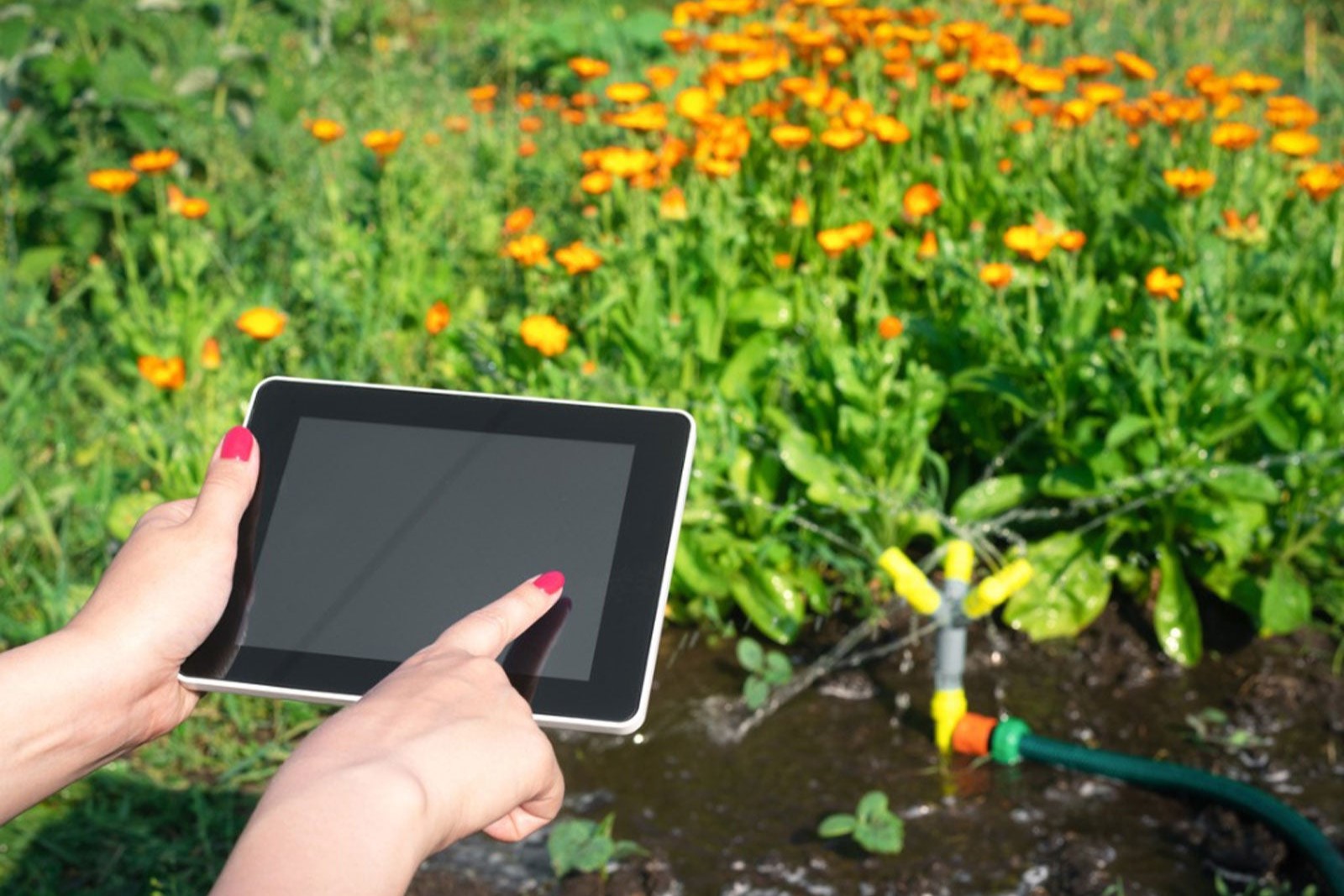
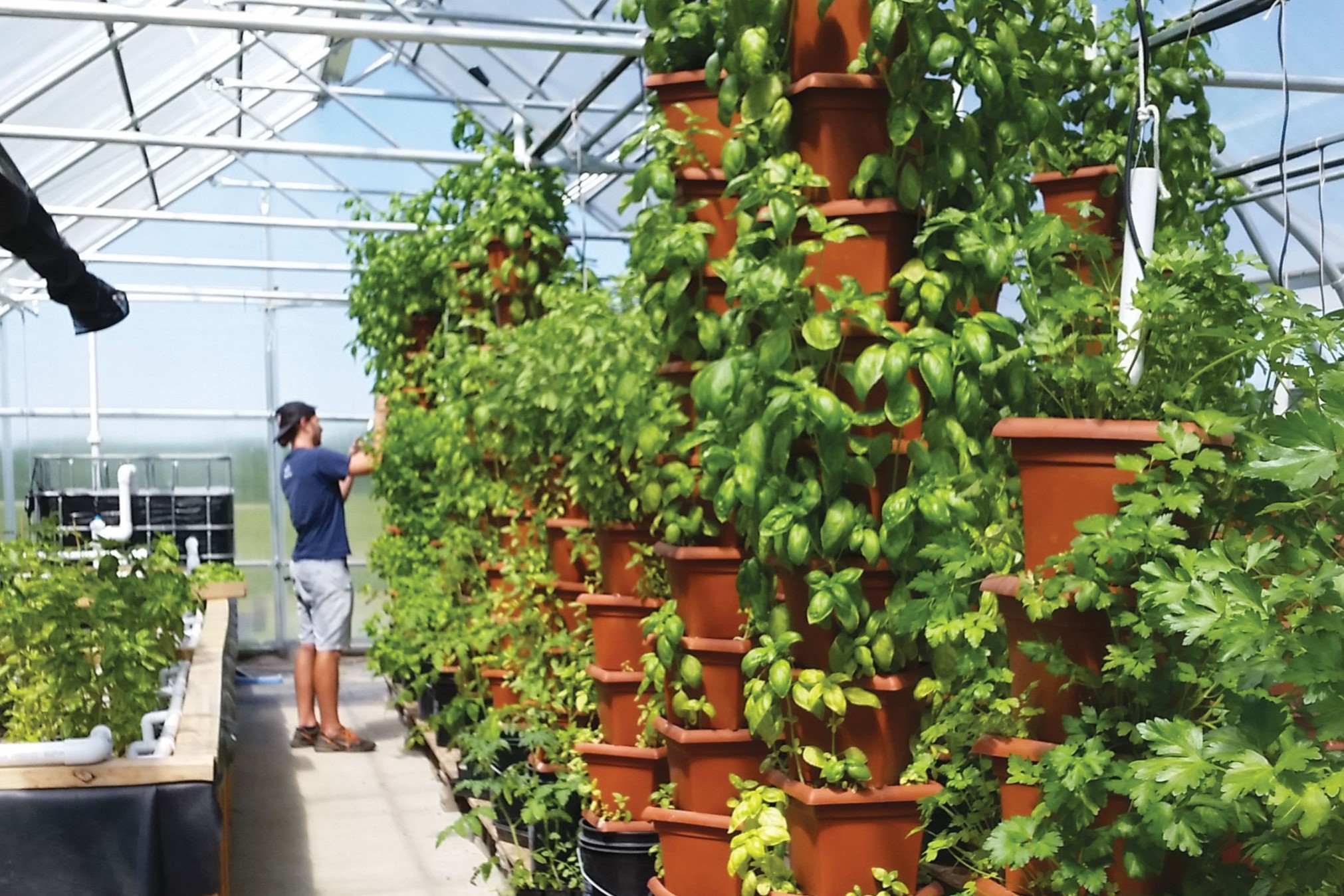
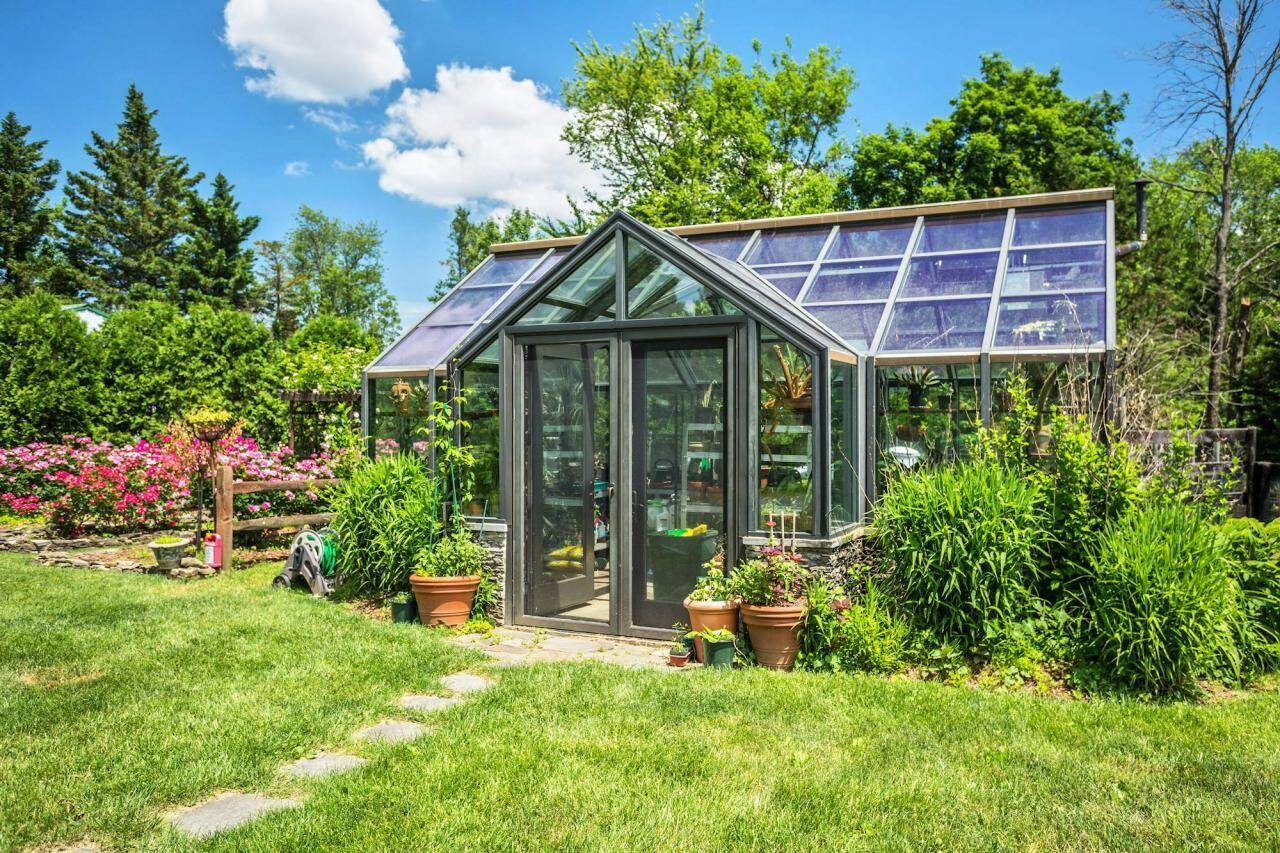

0 thoughts on “Best Garden Tillers To Weed, Plow, and Crumble Soil”